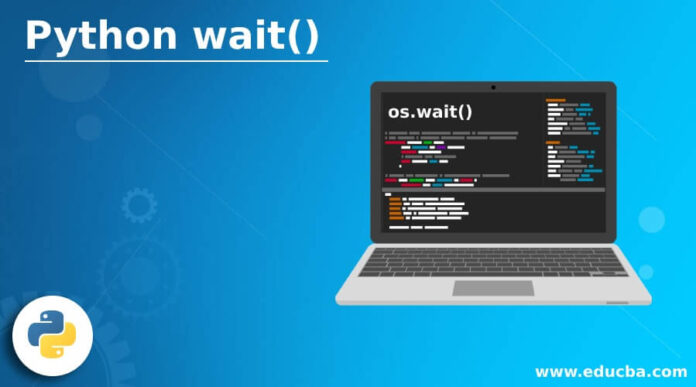Are you ready to unlock the untapped potential of Python wait? Dive into the world of efficient coding and seamless processes with this powerful feature. Discover how Python wait can revolutionize your programming experience and take your projects to new heights. Buckle up as we explore the endless possibilities that await with python wait!
The Benefits of Using Python Wait
When it comes to harnessing the power of Python, utilizing the wait functionality can offer a multitude of benefits. One key advantage is its ability to improve efficiency in code execution by allowing processes to pause until certain conditions are met. This feature enhances overall performance and streamlines workflows.
Additionally, Python wait facilitates better synchronization between different parts of a program, enabling seamless communication and coordination. By incorporating this capability, developers can create more robust and reliable applications that operate smoothly under various scenarios.
Furthermore, using promotes better resource management by preventing unnecessary consumption of system resources during idle periods. This helps optimize system utilization and enhance scalability for applications handling multiple tasks concurrently.
Leveraging the benefits of not only enhances productivity but also contributes to building more resilient and responsive software solutions.
Common Applications of Python Wait
a powerful tool with a wide range of applications across various industries. One common use case for web scraping tasks, where it can be employed to wait for elements to load on a webpage before extracting data. This ensures that the scraping process runs smoothly and efficiently, without encountering errors due to premature actions.
In the realm of automation, plays a crucial role in synchronizing actions within scripts. By incorporating waiting periods at strategic points, developers can ensure that different components of an automated workflow are executed in the correct sequence and timing.
Furthermore, Python Wait is often utilized in testing scenarios to manage synchronization issues between test steps and application responses. By implementing waits intelligently, testers can improve the reliability and stability of their automated tests by allowing sufficient time for elements to become available or processes to complete before proceeding further.
The versatility of makes it an invaluable asset for developers looking to enhance the performance and robustness of their code across diverse use cases.
Best Practices for Implementing Python Wait
When implementing in your code, it’s crucial to utilize it strategically. Start by clearly defining the conditions under which you want the program to wait before proceeding. This helps prevent unnecessary delays and ensures efficient execution.
Another best practice is to set appropriate timeout values when using Python Wait. By specifying a reasonable time limit for waiting, you can avoid potential hang-ups or excessive delays in your script.
Additionally, consider incorporating loops with to continuously check for the desired condition within a specified timeframe. This approach enhances the responsiveness of your code and allows for more dynamic control flow.
Always remember to handle exceptions gracefully when working with Python Wait. Implement error-handling mechanisms to address any unexpected issues that may arise during the waiting process, ensuring smooth execution of your script.
Troubleshooting and Debugging with Python Wait
Troubleshooting and debugging with crucial for ensuring smooth execution of your code. When encountering issues, the first step is to check if the wait time specified is appropriate for the task at hand. Adjusting this parameter can often resolve timing-related errors.
Another common pitfall is improper synchronization between different elements in your script. Make sure that all components are working in harmony to avoid unexpected delays or failures. Utilizing logging mechanisms can help track the flow of execution and pinpoint where potential bottlenecks may occur.
Additionally, be vigilant when handling exceptions during waits, as they can disrupt the expected behavior. Thoroughly analyze error messages and stack traces to identify root causes efficiently. Regularly testing and refining your waiting strategies will enhance the reliability and efficiency of your Python scripts over time.
Future Developments and Updates in Python Wait
As technology evolves, the future of holds promising advancements. Developers are continually working to enhance its capabilities and efficiency. One area of focus is optimizing wait times for smoother execution of code sequences.
Future updates may introduce new features that streamline the process of handling asynchronous tasks, making it even more powerful in managing complex operations. Additionally, improvements in error handling mechanisms are expected to provide better insights into debugging issues related to waiting functions.
With the rise of machine learning and AI applications, likely to incorporate functionalities tailored towards efficiently managing large datasets and parallel processing tasks. This will enable developers to leverage its potential in building advanced algorithms with improved performance and scalability.
The ongoing development efforts aim to solidify Python Wait as a reliable tool for enhancing productivity and performance across various programming projects. Stay tuned for exciting updates on how Python Wait continues to shape the future of coding practices!
Conclusion
Python Wait is a powerful tool that can significantly enhance the efficiency and performance of your code. By incorporating Python Wait into your applications, you can effectively manage asynchronous tasks, improve response times, and streamline processes. Embracing best practices for implementation and troubleshooting will help you make the most out of Python Wait’s potential.
As Python continues to evolve and new updates are released, we can expect even more enhancements and features to further optimize the use of Python Wait in various applications. Stay tuned for future developments in this dynamic programming language as it continues to shape the way developers approach concurrency and parallelism.
Harnessing the power of Python Wait opens up a world of possibilities for creating robust, responsive, and efficient software solutions. So why wait? Dive into the realm of python wait today and unlock its full potential for your projects!

